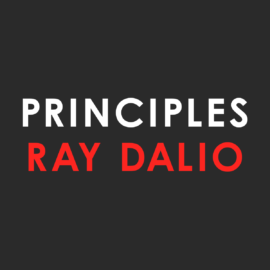He was a child who didn’t do well in school because of all the memory work demanded. Ray was a C average student until he went to college. Once there he was thrilled he could learn what he was actually interested in. It did not take him long to earn A’s and get into Harvard Business College.
When he was 12, Ray was a caddy at a golf course. He put his money into playing the stock market, at the time Northeast Airlines was selling for less than $5 per share. Throughout high school he played the market with ‘dollar-cost averaging’, namely, investing the same dollar amount each and every month regardless of earnings. However, that was 1966 and only the beginning.
Ray Dalio had and has a strong hunger for the finer things in life. Not only in the places he chose to go but the people he chose to surround himself with. His business was so mixed with pleasure that had to retain high standards in each. One of Ray’s first strategies was to play the market defensively while playing aggressively. One has to be aggressive to make money and defensive to keep money, as he believed.
In 1975 Ray began to sell commodities with a company, Bridgewater, he started with a friend from Harvard Business College. And by 1977 he got married. He and Barbara decided to start a family. Ray also began a pattern of learning from the market, what can be called a painful process of figuring the cause and effect. Commodities, stocks, bonds and currencies are of course, intertwined. This process of setbacks, then learning when losses or gains occurred became the principles of his approach in running a business.
Dalio grew Bridgewater from 6 employees in 1983 to 42 employees in 1992. Over the years he would write down the principles he learned in order to maximize profit for his clients. His developed strategies included ‘All Weather Trustfund’, ‘Meritocracy’ and ‘Risk Neutral’. Each finely tuned process enhanced any portfolio. His ‘Holy Grail of Investing’ became his breakthrough to immensely reducing risk while immensely increasing returns. Another of his principles is ‘Pure Alpha’ that, in fact, changed the industry of investment management. It put Bridgewater on the map as the largest active currency manager in the world.
He saw Bunker Hunt, the richest man in the world get richer and then watched him lose everything when the market took a plunge in March of 1980. He also watched Alan Bond, one of the richest men and entrepreneur in Australia forced into bankruptcy. These complete failures and his own close call to losing everything were mistakes that taught Dalio the value of complete transparency for making the profits he eventually saw and maintained. In finality Ray has retired from his years as CEO clocking out with his major accomplishments of reaching institution status for Bridgewater; making more total money on behalf of his investors than any other hedge fund and becoming a world leader or ‘shaper’ at the highest level in his industry.
This sets the stage for a great read: ***** (five stars for Part I) Part II covers Ray Dalio’s Life Principles and Part III, his Work Principles and will be reviewed, each Part going forward.


Leave a Reply